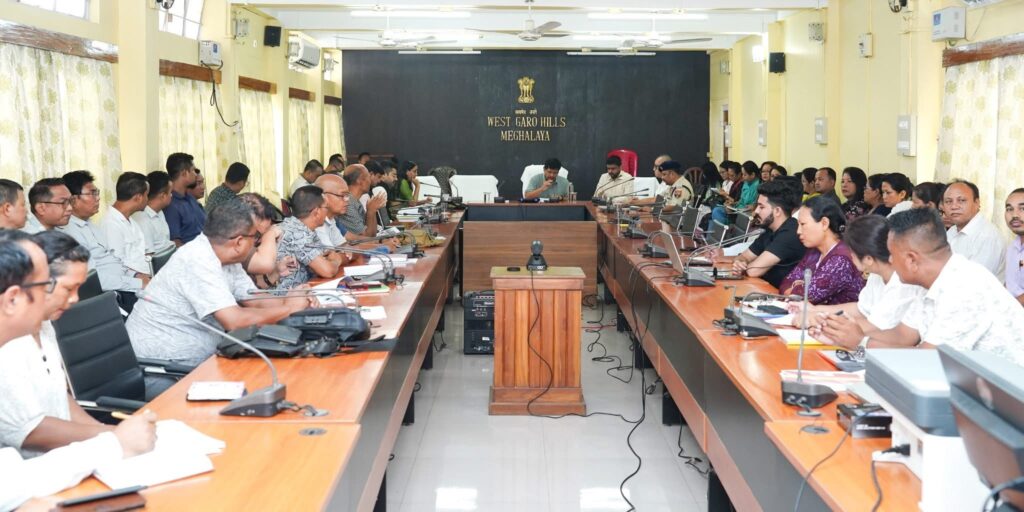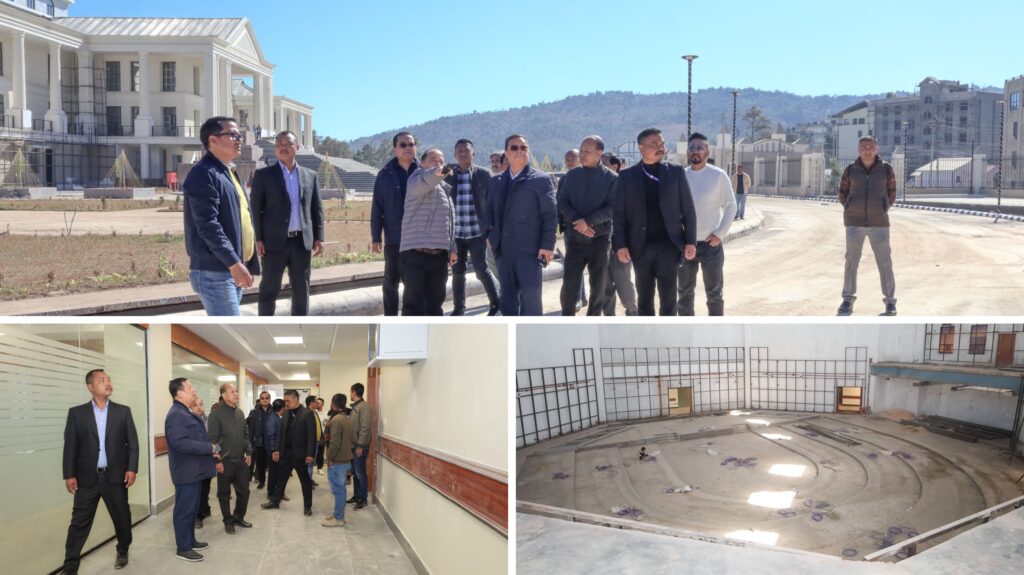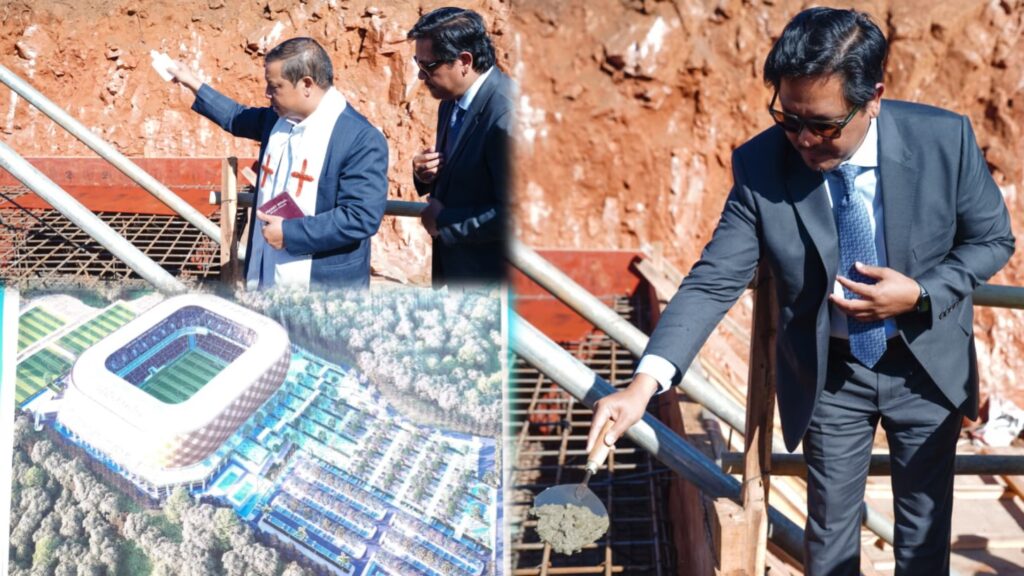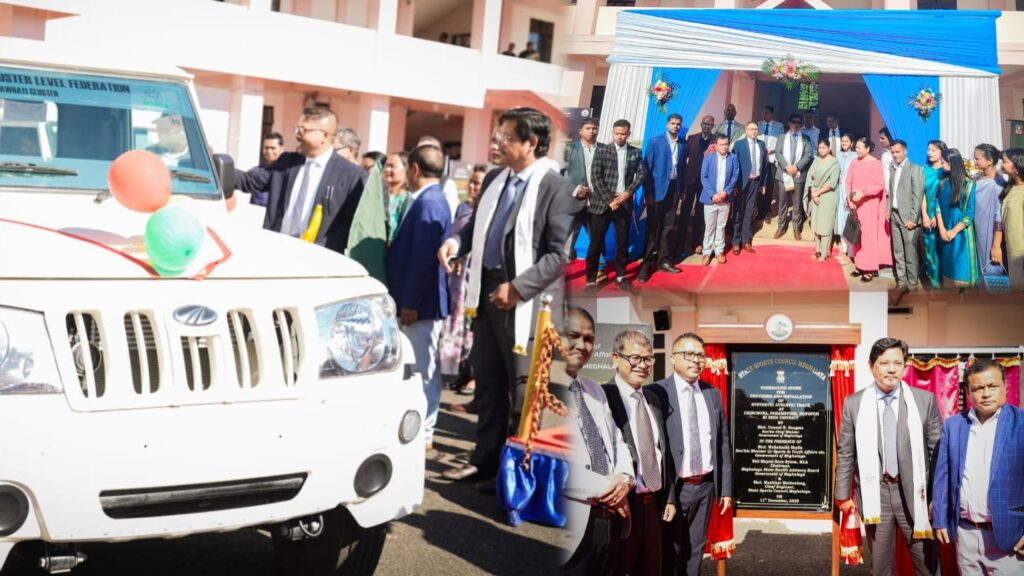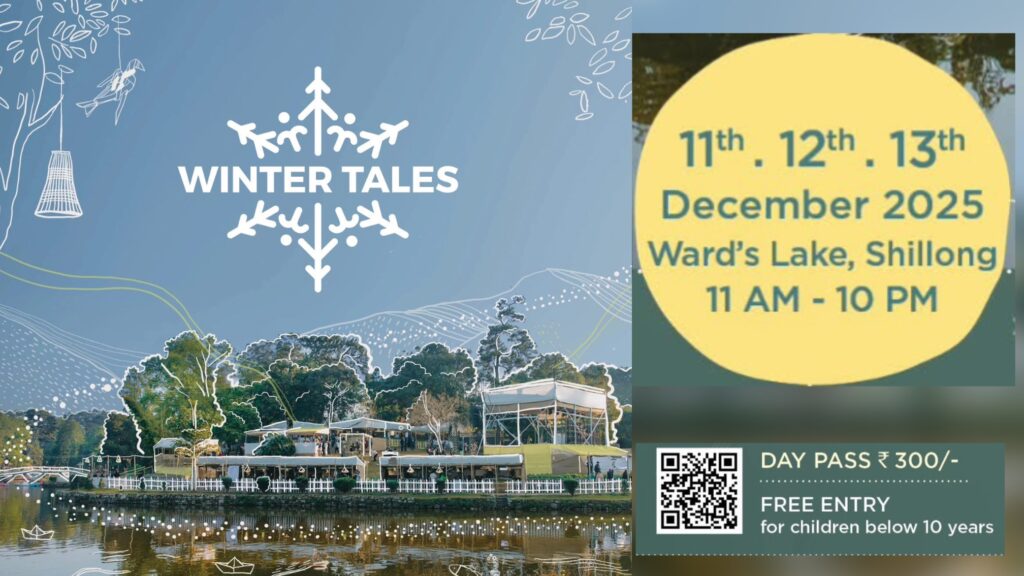Tura, August 28 : Chief Minister, Conrad K. Sangma, today, chaired a comprehensive review meeting with senior officials at the Circuit House in Tura, West Garo Hills. The agenda of the meeting included reviewing the progress of the Tura Medical College, assessing the status of sports development and infrastructure and addressing concerns related to the implementation of the Jal Jeevan Mission (JJM). The discussions were aimed at taking stock of ongoing projects, resolving bottlenecks, and ensuring timely completion of critical initiatives that directly impact citizens.
Opening the review, the Chief Minister emphasized that these meetings were not just for status updates but also for creating space where officials could freely share challenges and propose solutions. He reiterated the government’s commitment to addressing hurdles collectively and finding sustainable pathways forward.
On the progress of the Tura Medical College, officials reported that construction work has reached 78 percent completion and is on track to be finished by September 2026. Spread over nearly 84 acres, the project includes 47,000 square meters of academic and administrative space and 14,096 square meters for the teaching hospital. The hospital’s capacity has been enhanced to 735 beds.
However, road safety concerns were highlighted, particularly a steep slope near the bridge that may require realignment. Faculty recruitment remains a major challenge, with requirements for professors, associate professors, tutors, and residents proving difficult to meet even in established institutes.
On Shillong Medical College, officials confirmed that classes are expected to begin by September 2025. Admissions will be conducted through the 15 percent All-India quota and the State counseling process.
The Chief Minister highlighted that by the mid-2030s, with Shillong, Tura, and USTM medical colleges operational, Meghalaya will be producing more than 550 doctors annually, significantly reducing the State’s dependence on central pool seats and strengthening the healthcare system.
The review also focused on sports development and infrastructure. The Chief Minister emphasized that sports must be nurtured from the grassroots, beginning at the village and block levels, through the creation of basic facilities, identification of land, and provision of coaching support. He stressed the need for stronger engagement of local clubs and associations in nurturing young talent. Regular district and state-level tournaments were discussed as a way to standardize formats and ensure consistent participation, with chess and athletics highlighted as areas of strong potential across the State.
Concerns were raised about the availability of trained coaches and referees. Proposals were discussed for capacity-building programs, training of local officials, and leveraging retired athletes to contribute to grassroots training.
The Chief Minister directed the officials to streamline communication, remove bottlenecks and prepare a comprehensive roadmap that balances grassroots promotion with the growth of elite sports. He reminded officials that issues must be raised openly during such reviews and called on district administrations to take stronger responsibility for implementing sports initiatives.
Land use and infrastructure planning were also discussed, with the proposal to integrate multipurpose complexes that can serve administrative, secretariat, and sports needs. The Chief Minister highlighted the importance of sustainability and long-term vision in planning, while also noting that timely completion of projects must remain a priority. He emphasized that public outreach programs such as CM Connect would continue to bridge communication between the government and citizens, ensuring that feedback from the grassroots is directly integrated into policy.
A significant portion of the review was dedicated to the Jal Jeevan Mission. While reports show 90 percent completion of work, it was acknowledged that ground realities differ significantly, with nearly 20 percent of households still facing water supply challenges. The Chief Minister stressed the need for a state-wide audit to identify which schemes are functional and which are failing, so that solutions can be systematically planned. He noted that in hilly areas, power shortages affect water supply schemes, while in plain regions solar-based projects often fall short of demand. The poor functioning of Village Water and Sanitation Committees was identified as a major hurdle, with many committees inactive and reluctant to take responsibility without financial support.
The meeting discussed the technical shortcomings of early projects, many of which were based on outdated infrastructure that was never designed to serve current populations. Shortcomings in DPRs, such as insufficient water sources, inadequate pipe sizes, and improper implementation by contractors, have affected performance. Delays due to forest clearance requirements were also noted. The Chief Minister acknowledged that while the rush to meet targets may have compromised sustainability, the focus must now shift to corrective measures. He urged officials to prioritize quickly resolvable schemes while developing long-term solutions for complex issues.
Financial constraints were also raised, with nearly ₹2,000 crores pending payment to contractors due to delays in fund release from the Government of India. The Chief Minister expressed hope that the situation would improve by year’s end. He also noted that maintaining VWSCs would require nearly ₹500 crores annually, which is unsustainable for the State, and suggested exploring cluster-based approaches, cost-sharing with villagers, and partnerships with self-help groups, NGOs, and youth organizations. Proposals such as introducing maintenance contracts requiring contractors to remain responsible for 2–3 years post-completion and engaging local community members for small incentives were welcomed as practical solutions.

